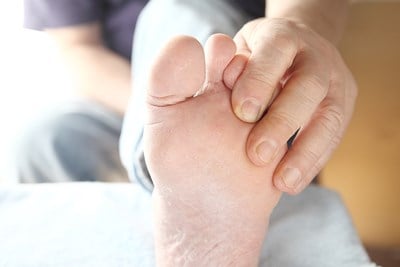Hammer toe is a foot abnormality that is the result of an imbalance in the tendons, ligaments, or muscles that keep your toe straight. The abnormality manifests as a bend in the middle joint of your toe, usually in your second, third, or fourth toe. Here is a look at what can cause hammer toe.
Causes
There are several causes for hammer toe, but the most common cause is wearing short, narrow, and too-tight shoes. The shoe manipulates your toe into a bent position, causing muscles and tendons in your toe to tighten and shorten. High heels are one of the most common types of footwear to cause hammer toe problems.
Other causes include:
- Trauma: When you injure your toe, the trauma from the injury can cause hammer toe to develop.
- Balance of toe muscles: Instability, which is the result of an imbalance your toe muscles, can cause the affected toe to contract.
- Congenital problems: Hammer toe can be present at birth.
- Neurological issues: In rare cases, more than one toe is affected. The most common cause for this is an impairment with your nerves or spinal cord.
Risk Factors
The following factors increase your risk for hammer toe:
- Age: The risk of hammer toe increases with age.
- Sex: Hammer toe is most likely to be seen in women who wear shoes that do not fit comfortably or who wear high heels frequently.
- Toe length: You have an increased chance of hammer toe if your second toe is longer than your big toe.
- Diseases: Conditions such as arthritis and diabetes can increase your risk for hammer toe.
- Genetics: You can inherit genetic traits that increase your risk for hammer toe, such as flat feet or a high arch.
Symptoms
Hammer toe is quite noticeable. If one of your toes is affected, you will see that the middle joint is bent, while the end part of the toe is bent downward and looks claw-like. Although you may still be able to move your toe when hammer toe first occurs, with time you will lose the ability to move the toe.
Hammer toe can be painful, especially when wearing shoes because of a callus that can develop on the sole of the foot of your affected toe. It is also common for a corn to form on the top of the toe.
Types
There are two types of hammer toe. They are:
- Flexible hammer toe: You have a flexible hammer toe if you can still move the toe at the joint. This type is an early form of hammer toe and is easier to treat. There are many conservative options that can treat flexible hammer toe.
- Rigid hammer toe: When the tendons in your toe become rigid, they force the joint out of alignment. This is a later stage of hammer toe that requires surgery.


